If you haven’t tried these 20 amazing culinary treasures, then you have yet to experience the full flavor of our state
Photography by Daryl Stone
New Jersey, the bountiful. Our swaths of fertile farmland, our seafood-rich ocean and bays, our orchards ripe with fruits, our bogs famous for berries. And, most of all, our people, diverse and devoted to personal heritage, serving forth the foods of their ancestors and imaginations. Don’t knock New Jersey’s culinary riches when I’m within earshot, because I’m armed with decades of eating experiences that I’ll use to bring you down.
Here’s my thinking, based on 50 years of Jersey-centric chowdowns: I wanted to make this list about the Jersey I knew as a kid, growing up in Somerset County, and I wanted to make it about the Jersey I have watched my home state become during the 25 years I’ve written about food. I wanted this list to reflect New Jersey’s food culture, past and present. I wanted to touch as many diverse facets of New Jersey’s eating culture as possible. Most of all, I wanted this list to reflect high quality, in humble and haute form.
I also wanted it to be fun. To that end, it mixes restaurants fancy and super-casual. It sports specific ingredients and icons. It taps into the ethnic riches that bring us a veritable United Nations of eating opportunities. It spans the length and width of the state and taps places famous and little known. It spotlights foods I’ve been eating since I was a kid and a couple I’ve only just come to know.
Do you have additions to this list? Bring them on…because they’re all likely places I had to, with regret and remorse, 86 from this list of 20 in order to whittle it down to the ultimate must-eats in the Garden State…
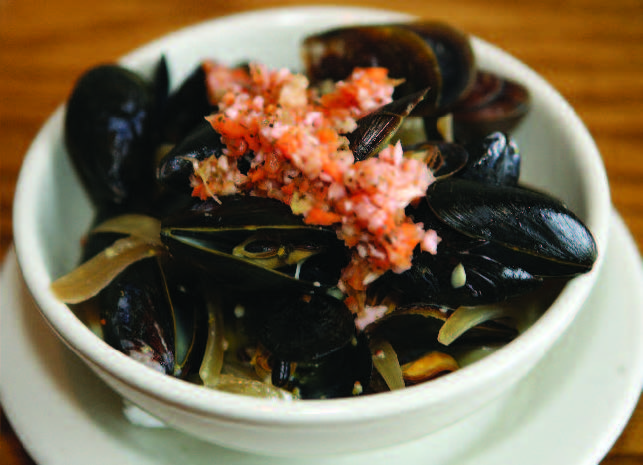 A Toute Heure • 232 Centennial Ave. • Cranford 908-276-6600 • atouteheure.com
A Toute Heure • 232 Centennial Ave. • Cranford 908-276-6600 • atouteheure.com
With 85 farms fortifying the kitchen, it’s no wonder the chefs at this true bistro of local ingredients seem to have an endless repertoire of gorgeous, delicious dishes. But it’s the menu’s list of “Mussel Pots” that brings me to my knees, mussels done both seasonally and soulfully, in portions with or without frites. Farm-to-table is what A Toute Heure is about, but the exquisite simplicity of its plates feeds my soul.
Alba Vineyards • 269 Route 627 • Finesville • 908-995-7800 • albavineyard.com
Alba, located in bucolic Warren County near the border of Hunterdon, is home to some of the most lauded wines on the East Coast. It’s a must-stop on any Jersey countryside tour, and it’ll have you plotting a move, if you live in a suburban or urban locale. Make sure to tote home Alba’s divine Red Raspberry Wine, for this dessert replacement/enhancement is nothing short of world class.
Allen’s Clam Bar • 5650 Route 9 • New Gretna •609-296-4106 • no web site
Ever since I first encountered the French Fried Lobster Tail at Allen’s, I’ve been curious about how the ’tails served here could be so large. I’m not exactly lightheaded when I eat them, usually having polished off some steamed clams and chowder, but I still can’t quite wrap my head around their size. There might be culinary chicanery of some sort, but I’ll keep doing what’s necessary to get to the bottom of this exceptional partnership of the sea king and expert deep-frying.
ARC Greenhouses/Mr. McGregor’s Greens & Herbs 440 Oak Road • Shiloh • 856-451-8800 • arcgreenhouses.com
If you’re lucky enough to come across the Mr. McGregor’s brand of greens in a specialty market, buy them. Don’t think, buy. In a vast expanse of meticulously farmed greenhouses in South Jersey’s Shiloh, the best greens sprout and then are snatched up by some of the region’s top chefs. There’s all manner of produce, but the little guys—peppercress, wasabi mustards, red amaranth—turn me into a hungry rabbit.
 Aunt Charlotte’s • 3 West Maple Ave. • Merchantville • 856-662-0058 • auntcharlottescandy.com
Aunt Charlotte’s • 3 West Maple Ave. • Merchantville • 856-662-0058 • auntcharlottescandy.com
Pretty, hand-painted chocolate, nonpareils, choice truffles—art meets sweet at this fourth-generation temple of confections, where folks make pilgrimages to fulfill their kids’ holiday wishes. There’s nothing not worth the indulgence, though there’s one item that likely will exceed expectations: Aunt Charlotte’s malted milkballs. Multiple layers take this humble candy-counter regular to dazzling heights of flavor you won’t believe till you try.
Cucharamama • 233 Clinton St. • Hoboken • 201-420-1700 • cucharamama.com
James Beard Best Chef Award-winner Maricel Presilla is not just a celebrated chef, but a scholar, a former Rutgers professor and culinary historian who specializes in the foods of Latin America and Spain. (Her “Grand Cocina Latina” won top honors in cookbooks at last year’s Beard Awards, cementing her place in the food world’s pantheon of superstars.) Her restaurant? Oh, it’s all that—and more. Eat through her menu and you’ll earn a doctorate in Latin foods. At the end of your “studies,” plan a feast with friends around Presilla’s roast suckling pig. A triumph of tradition.
 Drew’s Bayshore Bistro • 25 Church St. • Keyport • 732-739-9219 • bayshorebistro.com
Drew’s Bayshore Bistro • 25 Church St. • Keyport • 732-739-9219 • bayshorebistro.com
Chef-owner Drew Araneo, a multiple James Beard Award nominee, has a heartfelt menu of dishes inspired by New Orleans and Southern cookery. After trouncing Bobby Flay in “Throwdown,” Araneo and his signature dish winner Voodoo Shrimp became famous beyond Jersey’s borders. Justifiably so. Fans can’t resist ordering it time after time after time. Including me.
El Tule • 49 North Main St. • Lambertville • 609-773-0007 • eltulerestaurant.com
A Mexican-Peruvian combo, this Latin destination sports splendid takes on classics as well as more modern interpretations. I find myself in the mood for one or the other every time I eat here, but lately I’m leaning Peruvian: any of the ceviches, so resoundingly fresh, any of the quinoa dishes, particularly the Solterito de Quinoa salad, sprightly with vegetables and popping with the grain’s inherent nuttiness. Where has this food been all my life?
The Flaky Tart • 145 First Ave. • Atlantic Highlands • 732-291-2555 • theflakytartnj.com
The pastries, the cakes, the cookies, the buns, the mousse-y things whirled into artfully angular cups, the sandwiches on croissants, the quiches—oh, everything the lovely and talented pastry queen Marie Jackson does at the mecca she calls “the bakery” is sublime. But here’s a tip: Whenever the “Kerry Nolan Scone” is on tap, grab it. In fact, grab however many Kerrys there are. It’s a scone made of bacon, Cheddar, maple and apple, and it was great cook Kerry’s dream. (Name sound familiar?Kerry’s the morning news host on WQXR in New York.)
 Jhupdi • 1679 Oak Tree Road • Edison • 732-906-2121 • jhupdirestaurant.com
Jhupdi • 1679 Oak Tree Road • Edison • 732-906-2121 • jhupdirestaurant.com
One of the largest South Asian/Indian populations in America lives in and around this Middlesex County municipality, where there’s a wealth of Indian eateries. I’m invariably charmed by this South India specialist and its irresistible Thali platters, which offer a panoply of vegetarian selections from the state of Gujarat. Go for lunch one day, try a couple of the Thali platters, and find yourself wishing for seconds of bajri rotla and baigan bharta. And the cauliflower? Oh, my.
Melick’s Town Farm • 170 Oldwick Road • Oldwick • 908-439-2955 • melickstownfarm.com
In the late summer of 1977, farmer-freeholder George Melick introduced me to a white peach—one from his orchards in the village of Oldwick that date back to 1725. Eating that succulent peach changed my life. George and his wife, Norma (“Try a Jonathan apple, Andy”), opened a world of produce possibilities for me. They’ve done the same for generations of New Jerseyans. Now, with children Peter, John and Rebecca running the 650 acres they own (including 120 acres sporting 5,000 peach trees and 20,000 apple trees), the fruits of the Melicks’ labors continue to feed and educate.
 Mitsuwa Marketplace • 595 River Road • Edgewater • 201-941-9113 • mitsuwa.com
Mitsuwa Marketplace • 595 River Road • Edgewater • 201-941-9113 • mitsuwa.com
What Disneyworld is to a 6-year-old, this Japanese uber-market is to me. Prime produce, fishes, prepared foods, sweets and even an aisle with serious sakes. I’m transported to the Far East and inspired to bring home the ingredients for a feast that, however faintly, mimics Japanese culinary artistry. I snatch up the prepared foods and learn by eating at home.
Mustache Bill’s Diner • Eighth Street & Broadway • Barnegat Light • 609-494-0155 • no web site
The first time I had a fried flounder sandwich at this landmark at the northern end of Long Beach Island, I was riveted. The fish was pristine, the frying flawless. Even the tartar sauce hit the mark. That’s because owner Bill Smith buys that flounder right off the boats, from the island’s fishing fleet. In fact, everything at this diner is homemade, except for the French dressing. (Ah, the “why” of that’s a long story.) No wonder this place won a coveted James Beard America’s Classic Award.
Nasto’s Ice Cream • 236 Jefferson St. • Newark • 973-589-3333 • nastosicecream.com
Born in 1939 and celebrating its 75th birthday this year, the ice cream king of New Jersey started with old-family recipes of Sicilian-style ices and gelatos and kept pace with its evolving neighborhood. Now there’s mango and sweet corn in the lineup, as well as sea salt caramel and passion fruit. While proprietors Frank Nasto Jr. and Frank Nasto III give a nod to their vanilla, I have to pledge my devotion to my first Nasto’s love, the incomparable Honey-Fig Gelato.
Rat’s Restaurant • 16 Fairgrounds Road • Hamilton • 609-584-7800 • ratsrestaurant.com
Named for the hospitable character Rat in the childhood classic “Wind in the Willows,” sculptor and Rat’s mastermind J. Seward Johnson’s pet book, this French-inspired spot is set in the Grounds for Sculpture’s Giverny-esque landcape. Sunday brunch, a grand buffet that elegantly defies the same-old, same-old norm, is prime time to fuel on fare both modern and comforting, then stroll through an artful wonderland that hasn’t, and can’t be, duplicated anywhere else.
Shanghai Bun • 952 Route 34/Matawan Mall • Matawan • 732-765-8388 • Shanghaibunmatawan.com
Chinese eateries abound in New Jersey. But Shanghai Bun is different, because of its Beef Sandwich. A few slabs of thinly sliced veined beef on a seeded bun that’s neither a burger bun nor a flatbread are spread with a secret sauce that’s a little soy and a little sweet and then topped with skinny batons of something allium and a flourish of fresh cilantro. It’s an enigmatic sandwich that enchants every time.
Valley Shepherd Creamery • 50 Fairmount Road • Long Valley • 908-876-3200 • valleyshepherd.com
A visit to the Sheep Shoppe at this expansive, idyllic farm deep in the Morris County countryside may well net you cheeses for a year. Or, if you’re like me, cheeses that should last a year but don’t stretch for a week. Valley Thunder? Tewksbury? A tomme or wedge flecked with nettles? OK, it’s agony, but I’ll go with…my original favorite, Oldwick Shepherd.
White House Subs • 2301 Arctic Ave. • Atlantic City • 609-345-8599 • whitehousesubshop.net
Since 1946, this little sub shop has been putting to shame anyone who thinks slapping meat on bread is making a proper sandwich. The folks here hollow out the sub rolls, they calculate the right ratio of meat to cheese to bread to condiments. They are scientists and artists. They make the one and only White House Special, with extra salami, provolone, ham and capocollo. They are New Jersey.
White Manna • 358 River St. • Hackensack • 201-342-0914 • no web site
The slider-size cheeseburgers on potato rolls energized with a slap or seven of sautéed onions are meant to be ordered in threesomes. If you order fewer, you’ve either just had gastric bypass surgery or really don’t enjoy eating. There are fine burgers throughout New Jersey, but these little gems have a singularly sensational flavor, the perfect coming together of beef, bun and condiments. Plus, the close-clustered space surrounding the sushi-counter-like center of operations is pure community.
Zeppoli • 618 Collings Ave. • Collingswood • 856-854-2670 • zeppolirestaurant.com
So where’s the Jersey Tomato on this list, you ask? Well, it’s a sad fact that too many of our farmed tomatoes today are being picked unripe and shipped out of state. But anything with tomatoes here at chef Joey Baldino’s peerless Sicily-centric Italian restaurant is worth ordering. And anointing for saintly qualities. I’m remembering the Panzanella Catania, a tomato-and-bread salad, with capers and a correct proportion of white anchovies. Bliss. Lucky us that Baldino left Philly for this side of the Delaware.
 BLUE BY YOU
BLUE BY YOU
The Jersey Blue-Claw Crab, popping out of Jersey waters not far from you this summer. When the meat is sweet and the claws are fat with that meat, happiness is a certainty. What can you do with the crabmeat that our fisherfolk work so hard to catch? Make a sauce, with our Jersey tomatoes, and toss with pasta; make a salad, with our Jersey greens and lettuces; make a cake, with spices scored from our ethnic markets. Or eat it straight, as I do.
Editor’s Note: New Jersey’s bounty is both enviable and endless. We hope this list inspires you to make one of your own—and share it with us on our Facebook page.


 BEAT GENERATION
BEAT GENERATION VISION QUEST
VISION QUEST FINANCIAL AIDE
FINANCIAL AIDE LIGHTEN UP
LIGHTEN UP GET SMART
GET SMART INTO THE WOOD
INTO THE WOOD ON THE BALL
ON THE BALL WARMING TREND
WARMING TREND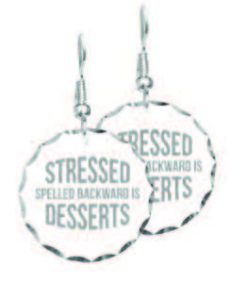 LOBE STORY
LOBE STORY BACK TO THE FUTURE
BACK TO THE FUTURE SWEET DREAMS
SWEET DREAMS LEG CANDY
LEG CANDY GYM DANDY
GYM DANDY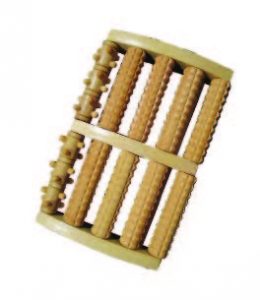 THERE’S THE RUB
THERE’S THE RUB  PAIN MANAGEMENT
PAIN MANAGEMENT UP IN THE AIR
UP IN THE AIR TOE HOLD
TOE HOLD
 Avid4Adventure in Boulder, CO teaches hiking, biking, climbing and paddling—building skills, grit and determination. “Kids from all over the country come for our outdoor adventures,” says Ileana Street. “Stand-up paddle boarding, rock climbing, and mountain biking are just some of our activity offerings. We make sports inviting not intimidating. It’s empowering to master a new skill and it’s a confidence-booster.” Campers stay in comfortable (but not cushy) cabins, and meal-wise, Avid4Adventure accommodates any kind of diet. Programs change every year so that repeat guests are introduced to new challenges.
Avid4Adventure in Boulder, CO teaches hiking, biking, climbing and paddling—building skills, grit and determination. “Kids from all over the country come for our outdoor adventures,” says Ileana Street. “Stand-up paddle boarding, rock climbing, and mountain biking are just some of our activity offerings. We make sports inviting not intimidating. It’s empowering to master a new skill and it’s a confidence-booster.” Campers stay in comfortable (but not cushy) cabins, and meal-wise, Avid4Adventure accommodates any kind of diet. Programs change every year so that repeat guests are introduced to new challenges. Bold Earth in Golden, CO, offers teenagers an adventure-travel summer camp filled with exploration, learning and discovery. The camp focuses on small groups and promotes leadership, teamwork and excellence in a supportive environment. “We introduce kids, in a very successful way, how to be in the game instead of simply playing the game,” says Abbott Wallis. “There are no locked doors, no HBO, and it’s all super-honest. We teach kids how to connect with others. We turn the entertainment on while turning the computers off. In bringing out laughter, dancing, and singing, we make sure that when kids return home they have a big story to tell—It was incredible…I was incredible.” Since 1976, over 15,000 students from 50 states (and more than 55 countries) have attended Bold Earth. Parents and teens are actually interviewed before being accepted.
Bold Earth in Golden, CO, offers teenagers an adventure-travel summer camp filled with exploration, learning and discovery. The camp focuses on small groups and promotes leadership, teamwork and excellence in a supportive environment. “We introduce kids, in a very successful way, how to be in the game instead of simply playing the game,” says Abbott Wallis. “There are no locked doors, no HBO, and it’s all super-honest. We teach kids how to connect with others. We turn the entertainment on while turning the computers off. In bringing out laughter, dancing, and singing, we make sure that when kids return home they have a big story to tell—It was incredible…I was incredible.” Since 1976, over 15,000 students from 50 states (and more than 55 countries) have attended Bold Earth. Parents and teens are actually interviewed before being accepted. Hi-Hills Day Camp at Gill St. Bernard’s in Gladstone, NJ offers a variety of programs for children ages 3 to 15 across 10 summer weeks. Whether a family’s goal is enrichment, academics, sports, fine arts or traditional camp programs, Hi-Hill has become quite good at offering something for everyone. Traditional camp activities include instructional tennis, yoga, archery, pottery, nature, technology, swimming, and dance. Teen travel programs (for ages 13 to 15) offer a mix of day camp activities and travels to nearby attractions, plus one five-day overnight trip. Enrichment programs includes academics, athletics, creative and performing arts—all which can be combined with any of Hi-Hills day camps. “What makes Hi-Hills unique,” says Allyson Day, “is that we are one of the most flexible camps. We recognize that summer is just as busy, if not busier, than a hectic school year. With that in mind, children can attend one or more of our programs for a half-day, half-week or whatever fits into their schedule.”
Hi-Hills Day Camp at Gill St. Bernard’s in Gladstone, NJ offers a variety of programs for children ages 3 to 15 across 10 summer weeks. Whether a family’s goal is enrichment, academics, sports, fine arts or traditional camp programs, Hi-Hill has become quite good at offering something for everyone. Traditional camp activities include instructional tennis, yoga, archery, pottery, nature, technology, swimming, and dance. Teen travel programs (for ages 13 to 15) offer a mix of day camp activities and travels to nearby attractions, plus one five-day overnight trip. Enrichment programs includes academics, athletics, creative and performing arts—all which can be combined with any of Hi-Hills day camps. “What makes Hi-Hills unique,” says Allyson Day, “is that we are one of the most flexible camps. We recognize that summer is just as busy, if not busier, than a hectic school year. With that in mind, children can attend one or more of our programs for a half-day, half-week or whatever fits into their schedule.” Otter Bar Lodge Kayak School on the Salmon River in Northern California is a premier kayak school. Its location may be remote, but the atmosphere is intimate and friendly. “Our concept is simple: keep it small, personable and first-class,” says Peter Sturges. “While we specialize in river kayaking, we also offer a number of other outdoor activities. Some kids come as kayak newbies, while others are experienced. Many come back year after year.” There is no Internet service for the kids, adds Sturges’s wife, Kristy, and they aren’t allowed to bring any electronics. “We keep them busy from dawn to dusk, so they don’t miss their smartphones or video games,” she says. “We have found over our thirty years in operation that given the choice, kids would rather be outdoors, learning or perfecting a new sport than typing away on electronics.” She adds the kids actually enjoy the remoteness, church-like silence and absence of tech distractions.
Otter Bar Lodge Kayak School on the Salmon River in Northern California is a premier kayak school. Its location may be remote, but the atmosphere is intimate and friendly. “Our concept is simple: keep it small, personable and first-class,” says Peter Sturges. “While we specialize in river kayaking, we also offer a number of other outdoor activities. Some kids come as kayak newbies, while others are experienced. Many come back year after year.” There is no Internet service for the kids, adds Sturges’s wife, Kristy, and they aren’t allowed to bring any electronics. “We keep them busy from dawn to dusk, so they don’t miss their smartphones or video games,” she says. “We have found over our thirty years in operation that given the choice, kids would rather be outdoors, learning or perfecting a new sport than typing away on electronics.” She adds the kids actually enjoy the remoteness, church-like silence and absence of tech distractions. EXPLORE MORE
EXPLORE MORE
 Wild Whatcom in Bellingham, WA immerses boys and girls in exploration of the Northwest’s vast forests, wild rivers, mountainous meadows, tumbling waterfalls and pebbled beaches. “We aim to help kids discover their capabilities through suitable challenges, to better understand themselves and others,” says Laurel Peak. Wild Whatcom campers hike the Cascade ridges, watch the sunset over the Pacific, sleep under a star-studded sky, and play games that promote meaningful connections and new discoveries.
Wild Whatcom in Bellingham, WA immerses boys and girls in exploration of the Northwest’s vast forests, wild rivers, mountainous meadows, tumbling waterfalls and pebbled beaches. “We aim to help kids discover their capabilities through suitable challenges, to better understand themselves and others,” says Laurel Peak. Wild Whatcom campers hike the Cascade ridges, watch the sunset over the Pacific, sleep under a star-studded sky, and play games that promote meaningful connections and new discoveries.

 got it. I got an ache? Oh, I got it. My eye’s twitching? [laughs] It’s COVID! So then I had a friend tell me to download the Calm app and meditate, so I did that for a while. What really helped me was just that I didn’t watch the news anymore. Honestly, that helped me a lot. But in late November, I had knee replacement surgery. So I went back into stress mode. It’s been a real ride!
got it. I got an ache? Oh, I got it. My eye’s twitching? [laughs] It’s COVID! So then I had a friend tell me to download the Calm app and meditate, so I did that for a while. What really helped me was just that I didn’t watch the news anymore. Honestly, that helped me a lot. But in late November, I had knee replacement surgery. So I went back into stress mode. It’s been a real ride!
 EDGE: It doesn’t sound like you had a mentor or a role model when you launched your entertainment career.
EDGE: It doesn’t sound like you had a mentor or a role model when you launched your entertainment career.

 was getting a whole lot of regular gigs—I just got my first commercial voiceover during quarantine, and it was the most exciting thing ever, doing the Rocket Mortgage commercials. I’m like, Woo-hoo, that’s me! I literally pause it and watch it. I watched the commercials to hear my voice. It’s like, you’re on TV, you have a show that comes on weekly. But there’s something about the voiceover commercial that excites me.
was getting a whole lot of regular gigs—I just got my first commercial voiceover during quarantine, and it was the most exciting thing ever, doing the Rocket Mortgage commercials. I’m like, Woo-hoo, that’s me! I literally pause it and watch it. I watched the commercials to hear my voice. It’s like, you’re on TV, you have a show that comes on weekly. But there’s something about the voiceover commercial that excites me.

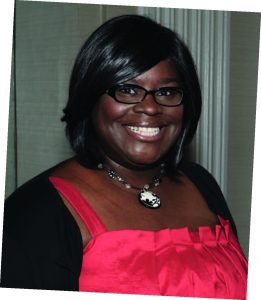



 His thumbprints are on projects ranging from a rambling rose garden in Bellingham, Washington and a rose garden and propagation program on the Frank Lloyd Wright-designed Southern Florida College campus, to a vast heritage rose collection in Chambersville, Texas and a children’s plant workshop a bit closer to home, in Harlem.
His thumbprints are on projects ranging from a rambling rose garden in Bellingham, Washington and a rose garden and propagation program on the Frank Lloyd Wright-designed Southern Florida College campus, to a vast heritage rose collection in Chambersville, Texas and a children’s plant workshop a bit closer to home, in Harlem. With the influx of genetically engineered roses, Scanniello’s approach to heritage roses is almost like a spiritual calling. “Rosarians have a responsibility to preserve species roses and their oldest known hybrids,” he explains. “Modern-day rose hybridizers are turning to these oldest roses for the key to creating healthy roses. Without the preservation of species and old roses, a valuable genetic link to disease resistance will be lost.”
With the influx of genetically engineered roses, Scanniello’s approach to heritage roses is almost like a spiritual calling. “Rosarians have a responsibility to preserve species roses and their oldest known hybrids,” he explains. “Modern-day rose hybridizers are turning to these oldest roses for the key to creating healthy roses. Without the preservation of species and old roses, a valuable genetic link to disease resistance will be lost.” The author of seven books on roses, Scanniello approaches his subject like a detective. His mission to find and preserve roses spans the world and is a bit of a race against time, as uneducated gardeners are planting newer breeds and eschewing the older roses. It is a mission that often leads him to some unexpected places. One source, for example, was discovered in East Germany, behind the former Iron Curtain. Sangerhausen Rose Garden—a time-warp, hermetically-sealed garden—had remained untouched from before World War II, offering healthy roses that had escaped the heavy-handed adulterations of modern-day hybridizers. Another fruitful, if macabre, source of heritage roses are old cemeteries. There, like ghosts surrounding old, unkempt graves, grow some of the best examples of heritage roses from another era.
The author of seven books on roses, Scanniello approaches his subject like a detective. His mission to find and preserve roses spans the world and is a bit of a race against time, as uneducated gardeners are planting newer breeds and eschewing the older roses. It is a mission that often leads him to some unexpected places. One source, for example, was discovered in East Germany, behind the former Iron Curtain. Sangerhausen Rose Garden—a time-warp, hermetically-sealed garden—had remained untouched from before World War II, offering healthy roses that had escaped the heavy-handed adulterations of modern-day hybridizers. Another fruitful, if macabre, source of heritage roses are old cemeteries. There, like ghosts surrounding old, unkempt graves, grow some of the best examples of heritage roses from another era. Starting your own heritage rose garden, Scanniello insists, is not as daunting a task as one might imagine. For starters, he recommends planting a heritage rose in a 24-inch pot or wooden barrel, placed in a location that gets plenty of sun. It should be watered either in the early morning or late afternoon, near the mid-day sun. He encourages New Jersey gardeners to plant roses hailing from New Jersey, such as a pink Jersey Beauty, which was created in South Orange, or South Orange Perfection, or New Dawn, a continually blooming genetic off-shoot of the Dr. van Fleet rose. Other good strains of roses that will bloom continually are the Parade or Dream Girl, bred by Martin Jacobus in Ridgefield in the 1950s and ’60s.
Starting your own heritage rose garden, Scanniello insists, is not as daunting a task as one might imagine. For starters, he recommends planting a heritage rose in a 24-inch pot or wooden barrel, placed in a location that gets plenty of sun. It should be watered either in the early morning or late afternoon, near the mid-day sun. He encourages New Jersey gardeners to plant roses hailing from New Jersey, such as a pink Jersey Beauty, which was created in South Orange, or South Orange Perfection, or New Dawn, a continually blooming genetic off-shoot of the Dr. van Fleet rose. Other good strains of roses that will bloom continually are the Parade or Dream Girl, bred by Martin Jacobus in Ridgefield in the 1950s and ’60s.
 Alan Richman, restaurant critic for GQ magazine, dean of food journalism and new media at the International Culinary Center in New York, author of the acclaimed book Fork It Over as well as thousands of newspaper and magazine articles, and recipient of the Bronze Star in the Vietnam War, is having lunch at Martino’s Cuban Restaurant on West Main Street in Somerville. It is a hot summer day.
Alan Richman, restaurant critic for GQ magazine, dean of food journalism and new media at the International Culinary Center in New York, author of the acclaimed book Fork It Over as well as thousands of newspaper and magazine articles, and recipient of the Bronze Star in the Vietnam War, is having lunch at Martino’s Cuban Restaurant on West Main Street in Somerville. It is a hot summer day. His grandparents, Rose and Nathan Rabinowitz, belonged to the Orthodox temple in Somerville, where young Richman “sat through services in 107-degree heat.” Though his grandmother “wasn’t a very good cook,” she did make a “fine kuchin.”
His grandparents, Rose and Nathan Rabinowitz, belonged to the Orthodox temple in Somerville, where young Richman “sat through services in 107-degree heat.” Though his grandmother “wasn’t a very good cook,” she did make a “fine kuchin.”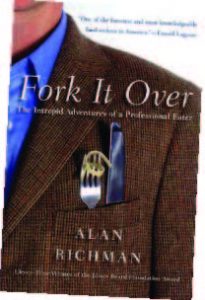 FOR FUTURE REFERENCE
FOR FUTURE REFERENCE
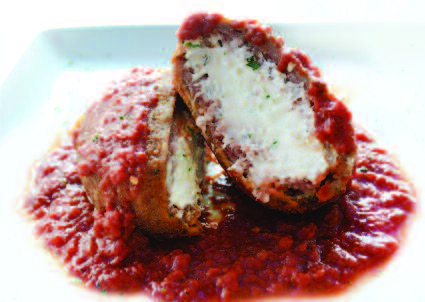 Café Z • Stuffed Meatball
Café Z • Stuffed Meatball Chestnut Chateau • Pan-Seared Tilefish
Chestnut Chateau • Pan-Seared Tilefish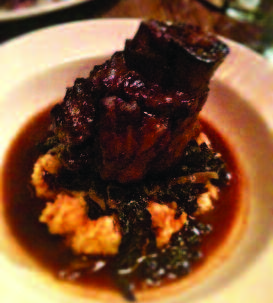 George and Martha’s American Grille • Pork Osso Buco
George and Martha’s American Grille • Pork Osso Buco The Manor • Surf & Turf
The Manor • Surf & Turf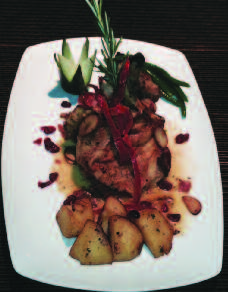 Mario’s Tutto Bene • Vinegar Pork Chops
Mario’s Tutto Bene • Vinegar Pork Chops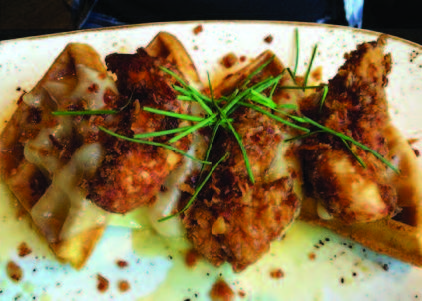 The Office Tavern Grill • Chicken & Waffles
The Office Tavern Grill • Chicken & Waffles The Office Beer Bar & Grill • The Wedge Burger
The Office Beer Bar & Grill • The Wedge Burger Piattino Neighborhood Bistro • Braised Chicken & Linguine
Piattino Neighborhood Bistro • Braised Chicken & Linguine Publick House • Blackened Scottish Salmon
Publick House • Blackened Scottish Salmon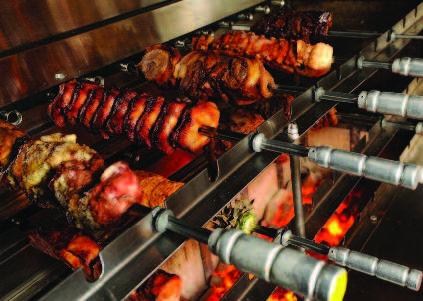 Rio Rodizio • Roasted Meats
Rio Rodizio • Roasted Meats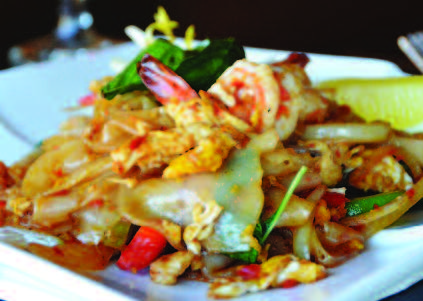 Thai Amarin • Drunken Noodles
Thai Amarin • Drunken Noodles
 There is a rule of thumb in the restaurant business: Try to be everything to all people, and the best you’ll be is Applebee’s. The worst you’ll be is out of business. That being said, Rella’s Italian Tavern proves you can serve two masters, both literally and figuratively. The restaurant’s menu offers two ways to go (as its name implies), imaginative Italian cuisine or reliable tavern fare. Co-owner Sal Chiarella knows his way around both kitchens. He created and sold both the neighborhood go-to spot Harborside Grill in Atlantic Highlands and Fratello’s, a high-end Italian eatery in Sea Girt. Both are still going strong.
There is a rule of thumb in the restaurant business: Try to be everything to all people, and the best you’ll be is Applebee’s. The worst you’ll be is out of business. That being said, Rella’s Italian Tavern proves you can serve two masters, both literally and figuratively. The restaurant’s menu offers two ways to go (as its name implies), imaginative Italian cuisine or reliable tavern fare. Co-owner Sal Chiarella knows his way around both kitchens. He created and sold both the neighborhood go-to spot Harborside Grill in Atlantic Highlands and Fratello’s, a high-end Italian eatery in Sea Girt. Both are still going strong. ON THE TAVERN SIDE
ON THE TAVERN SIDE
 FIT FOR A KING
FIT FOR A KING LINE ITEM
LINE ITEM ALL THAT GLITTERS
ALL THAT GLITTERS PETAL TO THE METAL
PETAL TO THE METAL NUMBERS GAME
NUMBERS GAME FAIR & SQUARE
FAIR & SQUARE ENDLESS LOVE
ENDLESS LOVE SPRING FEVER
SPRING FEVER GOLD FINGER
GOLD FINGER SIMPLY BRILLIANT
SIMPLY BRILLIANT FUTURE PERFECT
FUTURE PERFECT TRUE COLORS
TRUE COLORS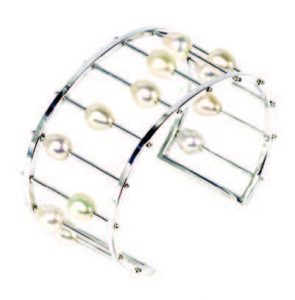 MAKE IT COUNT
MAKE IT COUNT PURPLE PASSION
PURPLE PASSION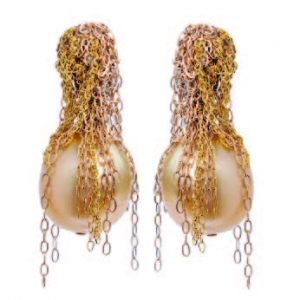 NET GAINS
NET GAINS CRAZY 8’S
CRAZY 8’S SWING TIME
SWING TIME









 Lewis & Clark College • Oregon
Lewis & Clark College • Oregon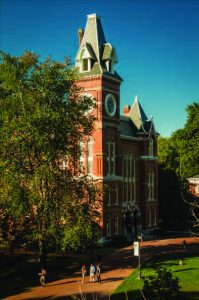
 Georgian Court University • New Jersey 5
Georgian Court University • New Jersey 5
 ALL IN THE FAMILY
ALL IN THE FAMILY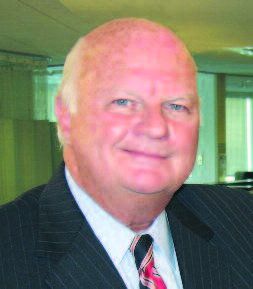 POWER PLAYER
POWER PLAYER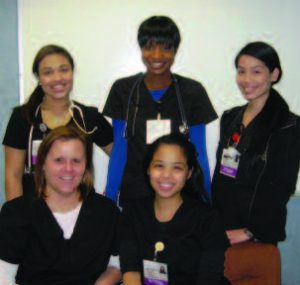 DESIGNED FOR NURSES
DESIGNED FOR NURSES COLON HEALTH… FROM A TO Z
COLON HEALTH… FROM A TO Z A LOOK INSIDE TRINITAS
A LOOK INSIDE TRINITAS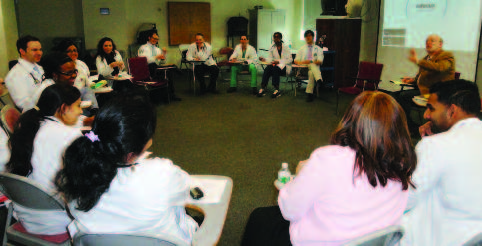 BEYOND MEDICINE
BEYOND MEDICINE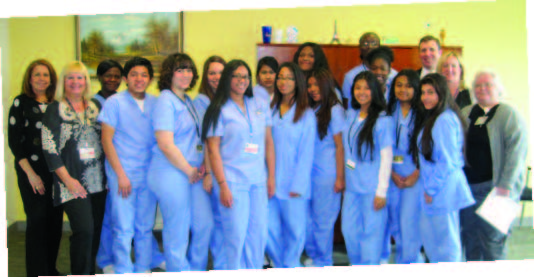 SHADOWING GETS AN A+
SHADOWING GETS AN A+
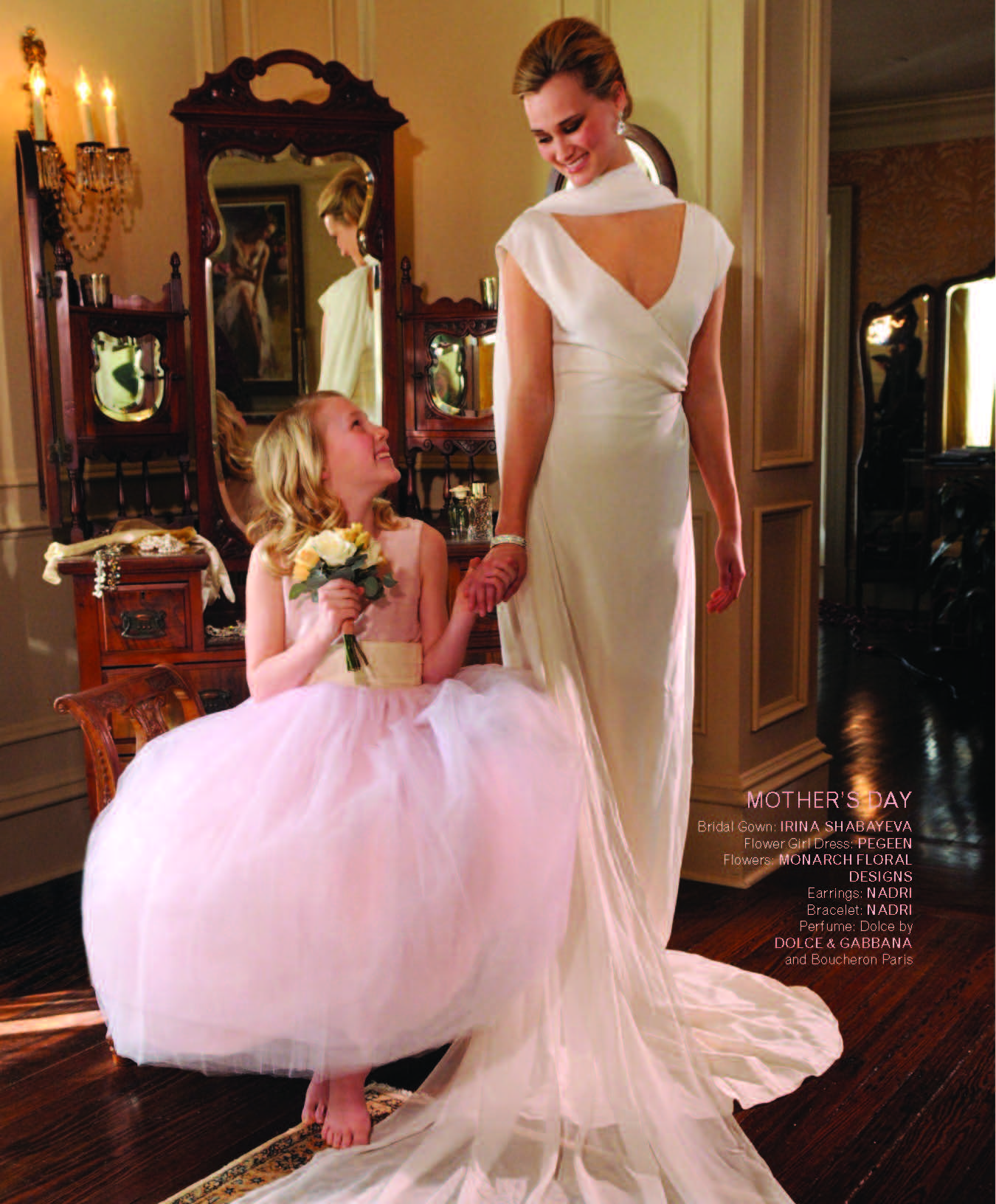

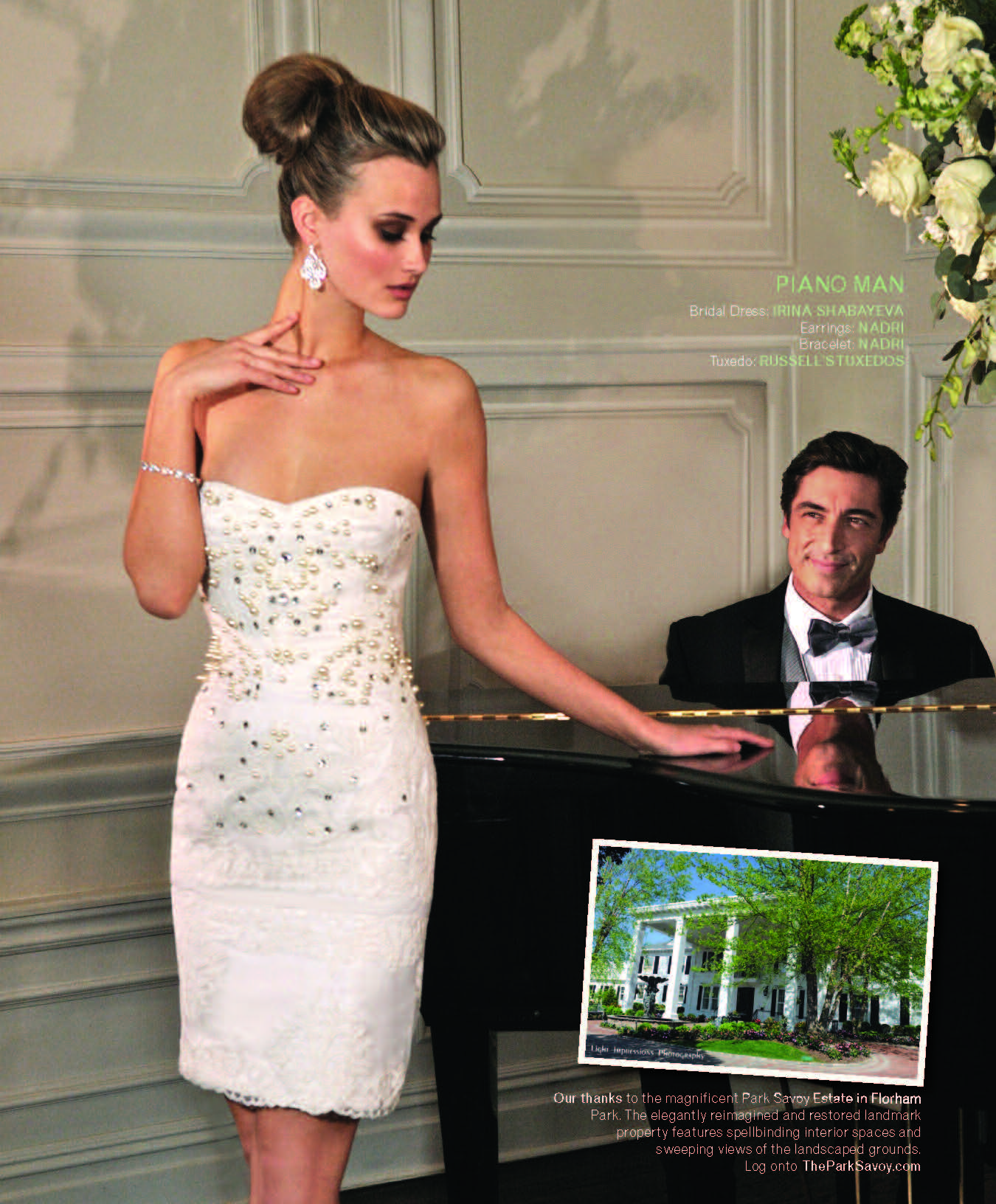

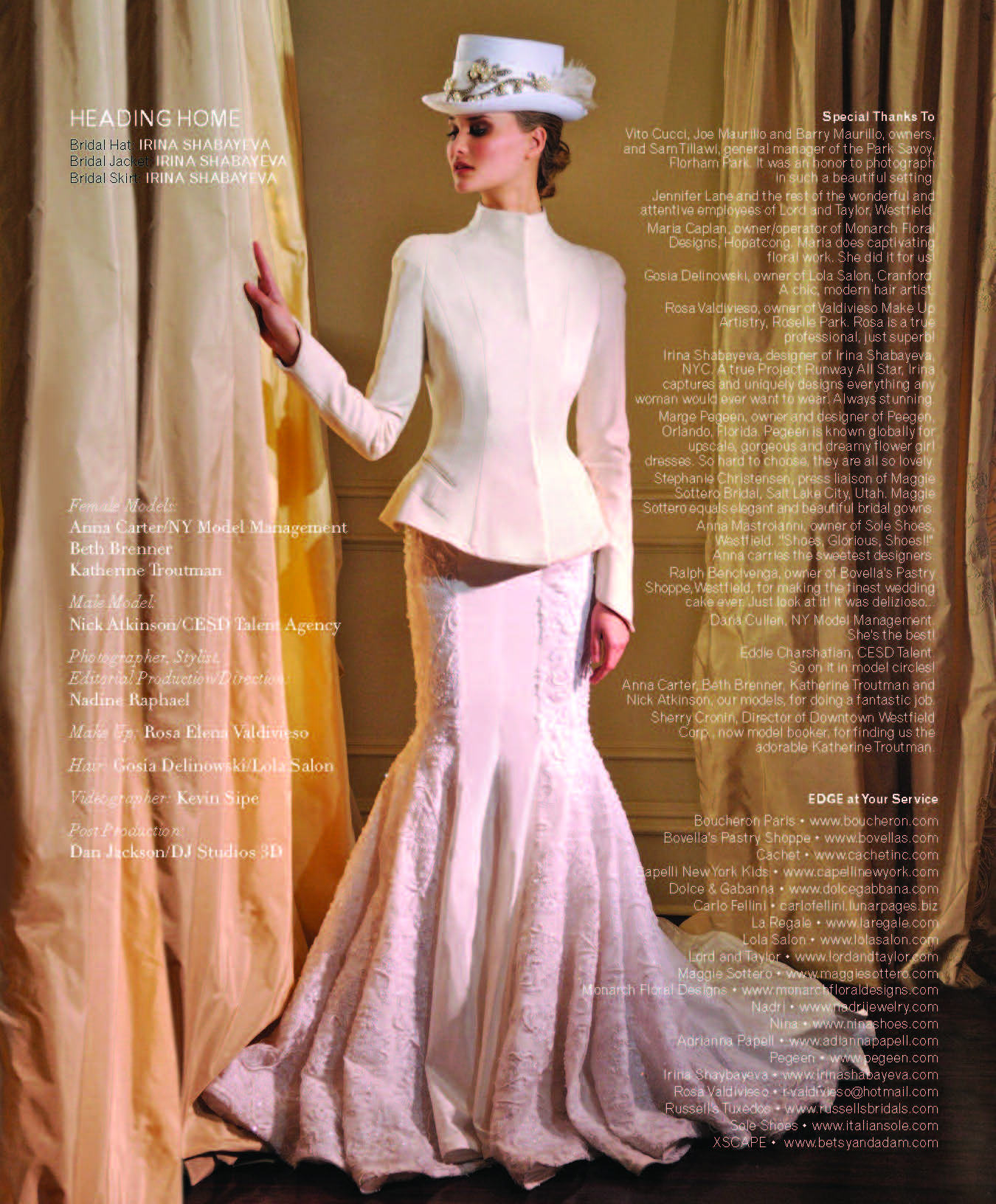

 They Do More Than Play Football at LSU
They Do More Than Play Football at LSU The Five-Second Rule: A Second Look
The Five-Second Rule: A Second Look Surprising Findings in Oral Cancer Study
Surprising Findings in Oral Cancer Study
 Home Games
Home Games
 Number One Not So Fun
Number One Not So Fun

 The Center features state of the art operating rooms offering comprehensive outpatient surgical procedures including plastic surgery, laparoscopic gynecological procedures, gallbladder surgery, hernia repair, orthopedic, vascular, podiatric, and pain management surgeries as well as cutting edge hemorrhoid surgery. Andrea Zimmern, MD, Colorectal Surgeon at Trinitas, is the first surgeon in Union County to carry out Transanal Hemorrhoidal Dearterialization (THD) procedures at the Center. “The groundbreaking THD procedure is virtually painless,” Dr. Zimmern says. “We tie off all the blood vessels that feed the hemorrhoid, and work in an area of the anal canal that has no pain sensory innervation. It’s a drastic, positive change from traditional surgery—patients are back to normal activities usually in less than a week. THD changes the game because we’ve removed the painful discomfort while minimizing recovery time. That’s an amazing advancement when you consider what hemorrhoid surgery used to mean.”
The Center features state of the art operating rooms offering comprehensive outpatient surgical procedures including plastic surgery, laparoscopic gynecological procedures, gallbladder surgery, hernia repair, orthopedic, vascular, podiatric, and pain management surgeries as well as cutting edge hemorrhoid surgery. Andrea Zimmern, MD, Colorectal Surgeon at Trinitas, is the first surgeon in Union County to carry out Transanal Hemorrhoidal Dearterialization (THD) procedures at the Center. “The groundbreaking THD procedure is virtually painless,” Dr. Zimmern says. “We tie off all the blood vessels that feed the hemorrhoid, and work in an area of the anal canal that has no pain sensory innervation. It’s a drastic, positive change from traditional surgery—patients are back to normal activities usually in less than a week. THD changes the game because we’ve removed the painful discomfort while minimizing recovery time. That’s an amazing advancement when you consider what hemorrhoid surgery used to mean.” The Center opened for business in March and will help Trinitas handle a growing demand for same-day surgery. From 2012 to 2013, the hospital experienced a rise of more than 15 percent in these types of procedures, and expects 10 to 15 percent growth in this category to remain steady for several years. About 45 percent of the surgeries performed at Trinitas are already of the outpatient variety.
The Center opened for business in March and will help Trinitas handle a growing demand for same-day surgery. From 2012 to 2013, the hospital experienced a rise of more than 15 percent in these types of procedures, and expects 10 to 15 percent growth in this category to remain steady for several years. About 45 percent of the surgeries performed at Trinitas are already of the outpatient variety.

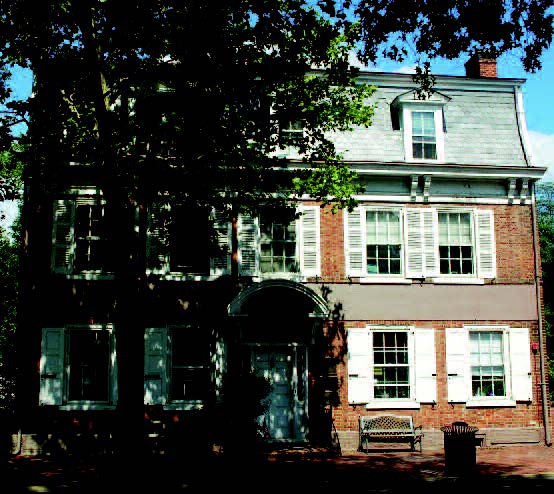
 PAINT THE TOWN RED
PAINT THE TOWN RED



 A Toute Heure • 232 Centennial Ave. • Cranford 908-276-6600 • atouteheure.com
A Toute Heure • 232 Centennial Ave. • Cranford 908-276-6600 • atouteheure.com Aunt Charlotte’s • 3 West Maple Ave. • Merchantville • 856-662-0058 • auntcharlottescandy.com
Aunt Charlotte’s • 3 West Maple Ave. • Merchantville • 856-662-0058 • auntcharlottescandy.com Drew’s Bayshore Bistro • 25 Church St. • Keyport • 732-739-9219 • bayshorebistro.com
Drew’s Bayshore Bistro • 25 Church St. • Keyport • 732-739-9219 • bayshorebistro.com Jhupdi • 1679 Oak Tree Road • Edison • 732-906-2121 • jhupdirestaurant.com
Jhupdi • 1679 Oak Tree Road • Edison • 732-906-2121 • jhupdirestaurant.com Mitsuwa Marketplace • 595 River Road • Edgewater • 201-941-9113 • mitsuwa.com
Mitsuwa Marketplace • 595 River Road • Edgewater • 201-941-9113 • mitsuwa.com BLUE BY YOU
BLUE BY YOU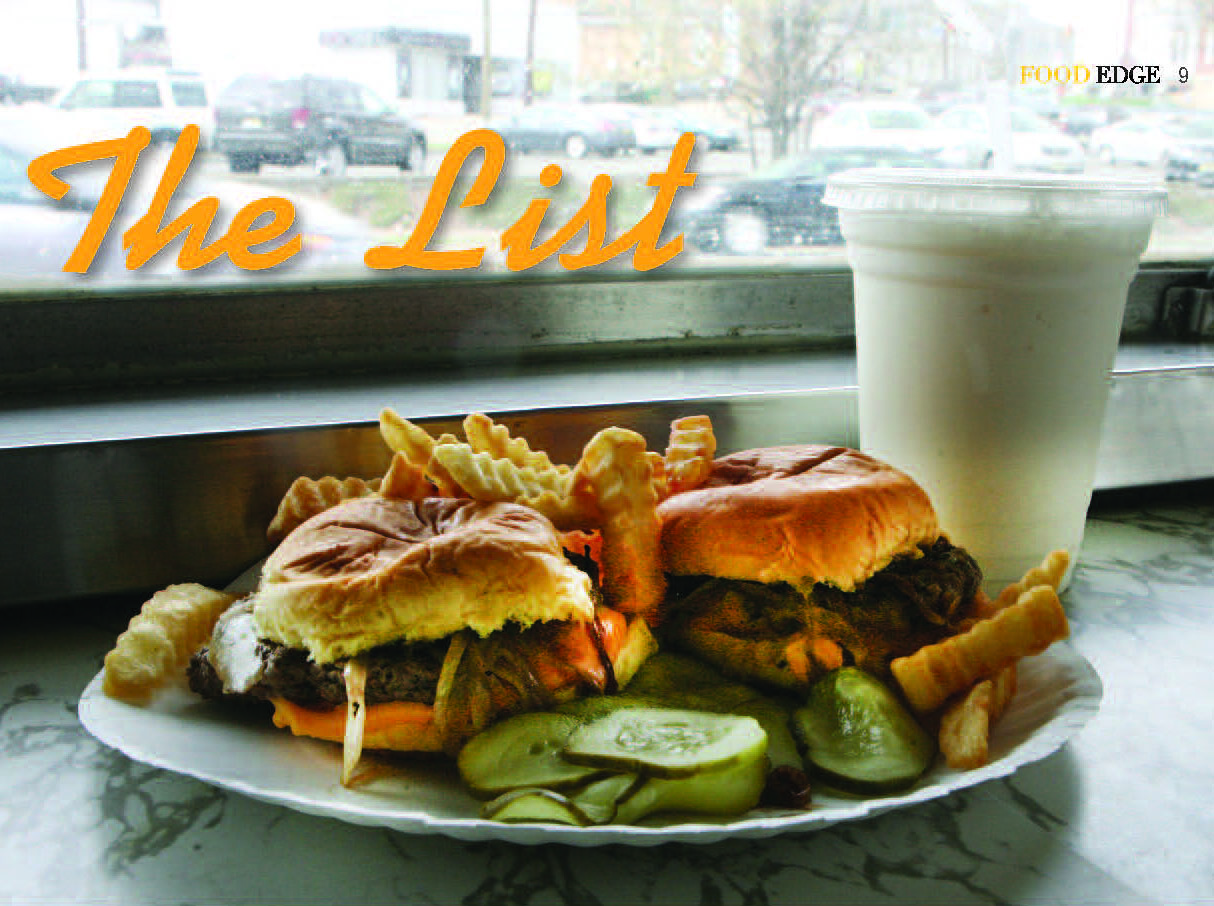
 CHECKING IN ON FUTURE HEALTH PROFESSIONALS
CHECKING IN ON FUTURE HEALTH PROFESSIONALS BOOSTING NURSING SCHOLARS
BOOSTING NURSING SCHOLARS A GIFT WORTH GIVING
A GIFT WORTH GIVING The saga of this collection started decades ago, in my early 20s, when I was working overseas at the Asian Wall Street Journal and studying Mandarin with a Chinese sage who, locals believed, could tell the past, present and future. People from all over Asia sought him out to help them with decisions big and small—where to bury an ancestor, which boyfriend to favor, whether a potential business partner was trustworthy. When I decided to return to the states, a fellow language student presented me with a Chinese coin. Not an old round one with a square hole in the center, like old Chinese money. No, it was a token for good luck, with the eight trigrams of the I Ching on it. The sage had suggested she give it to me to enhance my luck. I never considered myself superstitious—no rabbit’s paws, evil eyes or four-leaf clovers for me—yet, I put the token on a red string and wore it on my wrist. Over time, the sage gave me another Chinese token with Taoist writing on it, so it joined the other coin. Fine, two coins…
The saga of this collection started decades ago, in my early 20s, when I was working overseas at the Asian Wall Street Journal and studying Mandarin with a Chinese sage who, locals believed, could tell the past, present and future. People from all over Asia sought him out to help them with decisions big and small—where to bury an ancestor, which boyfriend to favor, whether a potential business partner was trustworthy. When I decided to return to the states, a fellow language student presented me with a Chinese coin. Not an old round one with a square hole in the center, like old Chinese money. No, it was a token for good luck, with the eight trigrams of the I Ching on it. The sage had suggested she give it to me to enhance my luck. I never considered myself superstitious—no rabbit’s paws, evil eyes or four-leaf clovers for me—yet, I put the token on a red string and wore it on my wrist. Over time, the sage gave me another Chinese token with Taoist writing on it, so it joined the other coin. Fine, two coins…




